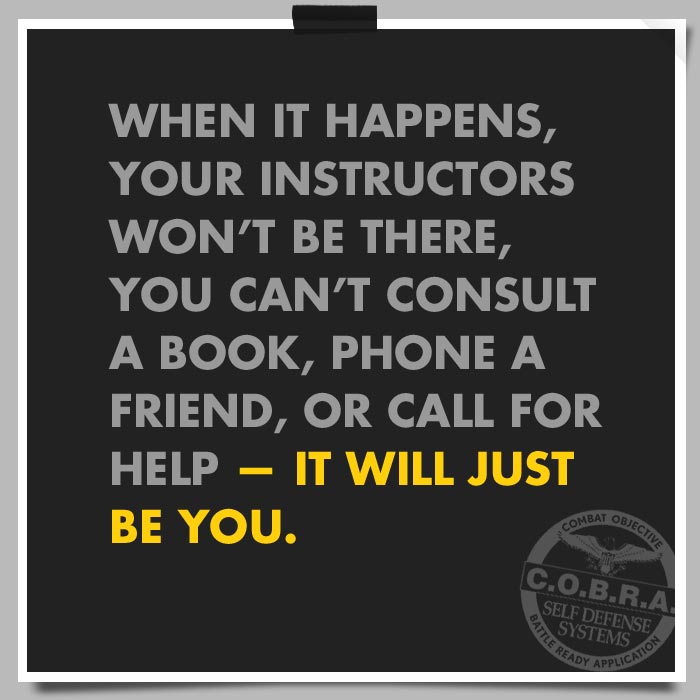After running the first scenario in the 10 week Academy called “Home Invasion” we ask the student de-briefing questions.
We ask if they hear a specific color that someone yelled, where the bad guy at different points and other questions specific to the scenario. Often times we will select a few students at random to run behind and strike repeatedly with a “Foam Baton”.
If we then ask the student “What was I (the Instructor) doing behind you during the scenario?”
90% of the time they will say “ I don’t know, I didn't even hear anything”. We will then ask the other students watching the scenario and they will say “He was yelling and hitting you with a foam Baton.”
“ I didn't even know I was being hit .” Is the most common statement from Cobra students in the Home Invasion scenario. Of course the foam baton doesn't hurt but it’s loud and you can feel it in a normal situation.
When students hear a person state that they didn't feel anything after seeing it live they are generally in disbelief.
Why? Because reality training is like nothing else they have ever seen.
Scenario training is the most effective and efficient way to learn realistic self-defense. It creates a permanent image and experience while reinforcing techniques learned by a student.
It quickly demonstrates what you will/ won’t do or can/can’t do under real time stress as well.
Scenario training also adds a shared group experience the generates a high level of unity among the group in training.
Who uses scenario training for it’s effectiveness?
*Law Enforcement
*Military
*Cobra-Defense Instructors
*Airline Pilots/ Cruise ship captains
*NASA
*Theme parks on simulated/ animated rides
There is a long list of industries that recognize the overwhelming benefits to scenario training.
5 Simple Elements To Improve Your COBRA Scenario Training.
- Make the scenario REAL. Give it a story line and consequences. Example our “Break the Hold” scenario is simply trying to escape a wrist grab while the bad guy pulls you from one cone to another 10 ft away.
That doesn't grab the minds attention. However this does: You are leaving a shopping center at 11 p.m. and while fumbling with your car keys a van pulls up , the door opens and a man jumps out and starts to pull you in-If they get you past this cone you will never be seen again.
That makes it very real to the mind and it quickly goes from static training to a life or death situation.
2. Clearly explain all rules of engagement to the students. If it’s a non-striking scenario be sure to explain it. Students need professional direction every step of the way.
- Be sure your role player/bad guy understands every scenario and takes into consideration every students differences. For example a 23 year male vs a 65 year old female with bad hips. A professional takes everything into consideration before every scenario.
- Keep a safe and professional training environment. Shield holders, safeties, move unnecessary items on the floor ect. There is nothing worse than a student getting hurt over something 100% preventable.
- Last but critically important- De-Brief every scenario using our Ask-Analyze-Praise model found in your Instructor manuals. It creates a closed loop experience and reinforces a positive experience for the student.
